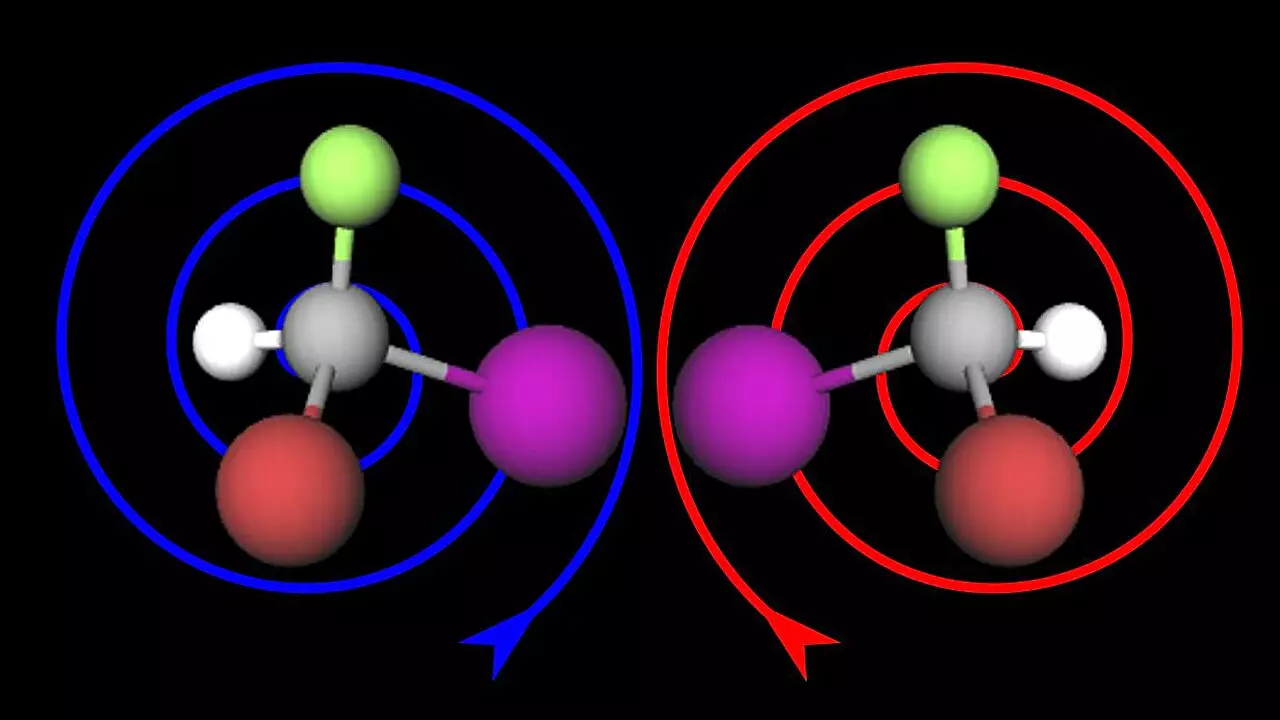The chiral structure of molecules, which refers to the spatial arrangement of atoms, plays a crucial role in the development of new drugs. Molecules exist in pairs known as enantiomers, which are mirror images of each other, much like a left and right glove. The twisted structure of a molecule can be left-handed or right-handed, leading to different influences on biochemical and chemical reactions. This difference in properties can have significant consequences, as seen in the case of the drug Contergan or Thalidomide, which caused physical deformities in children when administered to pregnant women in the 1960s.
Researchers from Karlsruhe Institute of Technology (KIT) and Voxalytic GmbH have made a groundbreaking advancement in the elucidation of chiral molecular structures using nuclear magnetic resonance (NMR) spectroscopy. This innovative method allows for the direct measurement of chiral structures, providing valuable insights into the properties and effects of molecules. Previously, this process was time-consuming and challenging, but with this new method, it has the potential to become a standard tool for the chemical and pharmaceutical industries.
Nuclear magnetic resonance (NMR) spectroscopy is the only method capable of elucidating chemical structures at an atomic level resolution at ambient temperature. However, until now, NMR spectroscopy was unable to differentiate the chirality of molecules. This new method developed by the research team led by Professor Jan Korvink from KIT has overcome this limitation. By directly measuring the twists of molecules using NMR spectroscopy, researchers can now gain a deeper understanding of chiral structures and their impact on drug development.
The implications of this breakthrough in chiral structure elucidation are significant for the pharmaceutical industry. Pharmaceutical companies are now required to ensure that active ingredients, often chiral in nature, do not convert to their opposite enantiomer in the human body. By incorporating this new method into NMR analysis, chemists can streamline the process of producing specific enantiomers, making drug development more efficient and accurate.
As Dr. Sagar Wadhwa from Voxalytic mentions, the concept has been patented, indicating its potential to become a standard method of NMR analysis in the future. This advancement will not only benefit researchers and chemists but also pave the way for more effective drug development processes. Dr. Dominque Buyens from KIT highlights the importance of studying this new method in the context of drug development, emphasizing its potential impact on the field.
The development of a new method for elucidating the chiral structure of molecules using NMR spectroscopy represents a significant milestone in drug development. By enabling researchers to directly measure chiral structures, this breakthrough has the potential to revolutionize the pharmaceutical industry and improve the efficiency and accuracy of drug development processes.


Leave a Reply